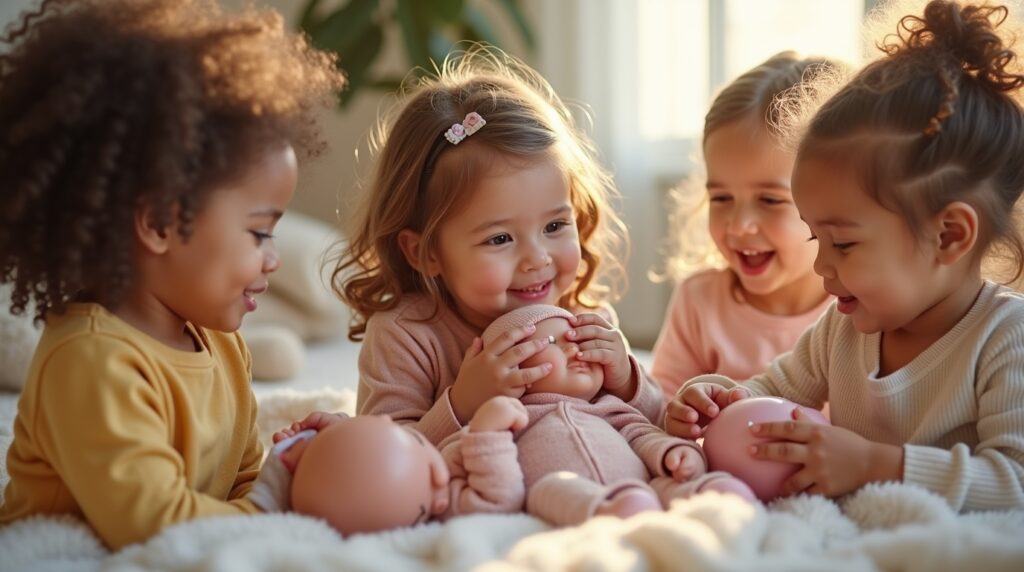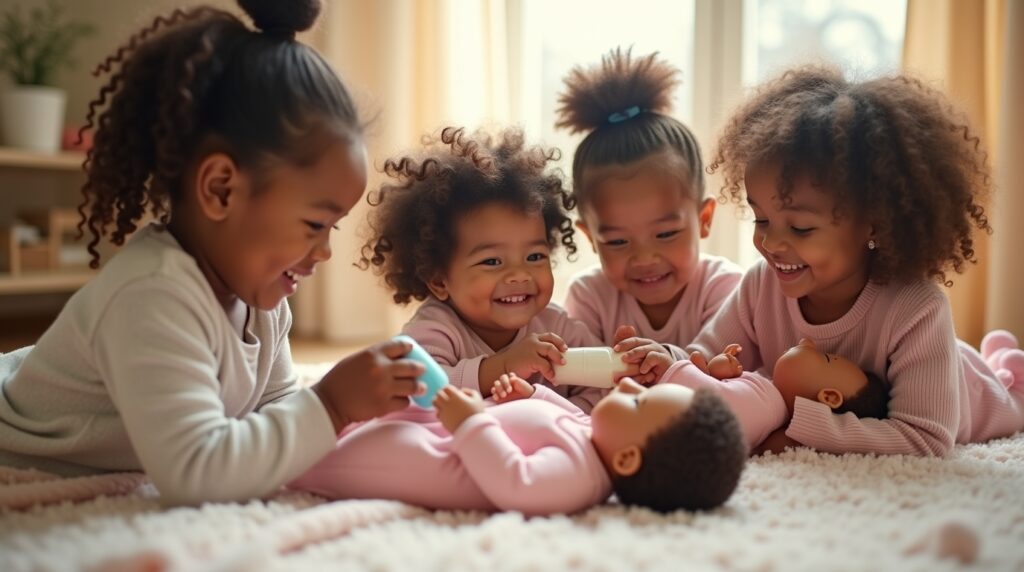No products added!

In the contemporary world, children are accustomed to a plethora of screens, digital distractions, and rigorously scheduled activities. While technological advancements do have their benefits, emotional grounding is increasingly necessary, which is something as simple as a cuddly baby doll soft toy provides.
Soft dolls are no longer just cuddly companions; they now serve precious roles in wellness, cognitive developmental progress, and socialization. Through further advancements in smart fabrics, hypoallergenic materials, and storytelling-based designs, baby dolls are set to evolve in 2025 alongside the needs of modern caregivers while honing creativity and emotional resilience.
This blog describes why baby doll soft toys are important for emotional well-being, how they aid in psychological development, and how parents can best select a doll for their child’s developmental stage, temperament, and sensory processing needs.
Emotional and Psychological Benefits of Baby Doll Soft Toys
1. Emotional Comfort and Security
Children develop strong emotional attachments to their soft toys and view them as companions, confidants, and sources of comfort. Child psychologists believe that transitional objects, such as baby dolls, assist children in:
- Soothing themselves during stressful instances such as separation anxiety, bedtime routines, or doctor visits.
- Listening to their feelings and expressing emotions they may not yet possess the words for.
- Enhancing empathy through the “baby” doll caregiving practice.
Real-life example:
A 2024 study by the Child Development Institute found that preschool-age children possessing soft dolls experienced lower cortisol levels during stressful transitions compared to peers who did not possess soft dolls.
2. Advocacy for Nurturing & Social Skills
Role-play encourages honing and integration of the following skills:
- Compassionate caregiving (feeding, rocking, and dressing) fosters empathy
- Mimicking parental roles assists understanding of familial relations
- Pretend dialogues support language development
Parenting trend alert:
In 2025, baby dolls will be instrumental in fostering gentle toddlerhood through the emphasis of emotional intelligence and kindness, providing teachable moments to engage in responsible citizenship.
3. Enhancing Creativity & Imagination
Doll play fosters imagination and creation as it is an interactive alternative to screen time.
Theory of Mind becomes enhanced as children develop:
- Cognitive flexibility (e.g., solving: How should I calm my crying doll?)
- Language (narration, describing)
- Narrative sequencing
Expert tip:
Dr. Emily Carter, child psychologist, recommends 30 minutes of “unstructured doll play” to ignite unrestricted imagination.rter, a child psychologist, suggests “unstructured doll play” for at least 30 minutes daily to foster creativity.

How Modern Baby Dolls Are Evolving in 2025
1. Smart Fabrics and Responsiveness
- Security soft dolls feature temperature-responsive padding, simulating gentle warmth.
- Some offer gentle heartbeat sounds for calming effects.
- Materials like organic cotton and bamboo fiber are hypoallergenic and perfect for eco-conscious consumers.
Example:
“HuggleBuddy Smart Doll” (release date: 2025) — children’s interactive smart doll giggles softly upon receiving hugs, fostering emotional development and interaction.nnected.
2. Learning Dolls Integrating Storytelling
- New dolls incorporate storytelling and educational elements
- Diverse representation dolls promote multicultural inclusivity
- “Adventure baby dolls” come with mini storybooks detailing their journeys
- Bedtime stories and lullabies can be accessed through interactive QR codes
3. Sensory-Thoughtful Design Features
To address the needs of children with sensory processing issues, brands offer:
- Calming weighted dolls
- Tactile exploration through various textures: smooth, fluffy, and ribbed
- Minimalistic facial features to reduce overstimulation
NAEYC supports inclusive toy design for early learning.
How to Choose the Right Baby Doll for Your Child
By Age Group
| Age | Recommended Doll Type | Key Benefit |
|---|---|---|
| 0-12 months | Soft, crinkle-textured dolls | Sensory stimulation |
| 1-3 years | Washable, lightweight dolls | Fine motor skills |
| 3-6 years | Interactive dolls with accessories | Role-play & empathy |
| 6+ years | Customizable dolls (outfits, hairstyles) | Creativity & responsibility |
BBy Traits & Sensory Needs:
- For anxious children: Weighted or heartbeat-sounding dolls
- For creative kids: Customizable dolls with changeable parts
- For sensory seekers: Dolls with multiple textures
Pro Tip:
Children develop better emotional attachments if they are allowed to choose their dolls themselves.
FAQs Related to Baby Doll Plush Toys
Q: Are baby dolls exclusively for girls?
A: Not at all! Children of all genders can benefit from engaging in nurturing, emotionally expressive role play through doll interaction.
Q: What is the best method for cleaning a soft baby doll?
A: Most new toys come with care labels, and many modern soft toys can be put through gentle cycles in washing machines.
Q: Can the practice of using baby dolls mitigate sibling jealousy?
A: Yes! Rivalry is reduced by granting younger children the role of caring for their own “baby.”
Final Thoughts: Why Every Child Needs a Baby Doll in 2025
In times when screens and technology are prevalent, soft baby dolls remain timeless tools for fostering emotional health, creativity, and empathy. Today’s caring and screen-free companions are designed to cater to modern parenting objectives, thanks to smart fabrics, hypoallergenic safety features, and even interactive storytelling.
✨ Taking Action:
Notice how your child engages during play and select a doll that resonates with their emotional and sensory development. A soft toy can be a powerful instrument for joy and development when paired correctly — whether as a counselor during sleep or as a friend during adventures.
🧸 What is your baby’s favorite doll? Please let us know in the comments!

